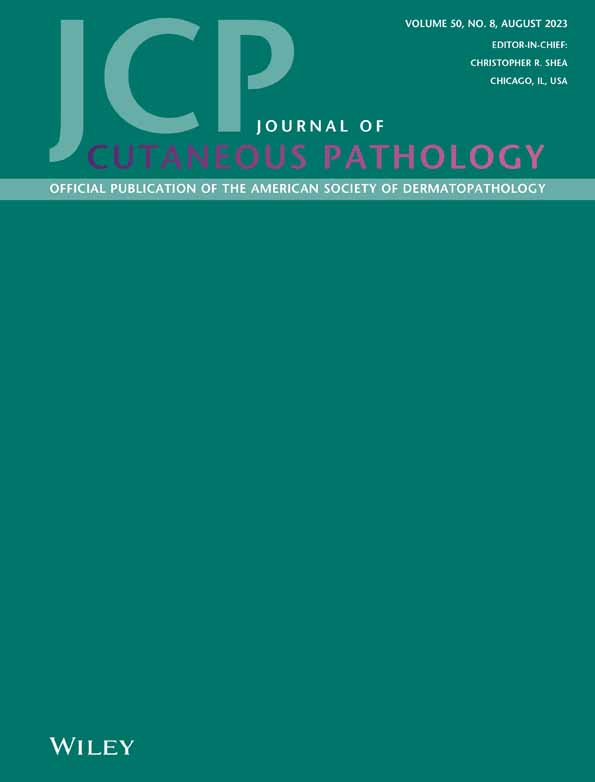Clinicopathologic and genetic characterization of invasive melanoma with BRAF V600K mutation: A study of 16 cases
Abstract
Background
The clinicopathologic and genetic features of cutaneous melanoma with a BRAF V600K mutation are not well-known. We aimed to evaluate these characteristics in comparison with those associated with BRAF V600E.
Methods
Real-time polymerase chain reaction (PCR) and/or the MassARRAY® system were used to detect BRAF V600K in 16 invasive melanomas and confirm BRAF V600E in another 60 cases. Immunohistochemistry and panel next-generation sequencing were used to evaluate protein expression and tumor mutation burden, respectively.
Results
The median age of melanoma patients harboring the BRAF V600K mutation (72.5 years) was higher than those with the BRAF V600E (58.5 years). The two groups also differed in sex (13/16 [81.3%] male in the V600K group vs. 23/60 [38.3%] in V600E) and in the frequency of scalp involvement (8/16 [50.0%] in V600K vs. 1/60 [1.6%] in V600E). The clinical appearance was similar to a superficial spreading melanoma. Histopathologically, non-nested lentiginous intraepidermal spread and subtle solar elastosis were observed. One patient (1/13, 7.7%) had a pre-existing intradermal nevus. Diffuse PRAME immunoexpression was seen in only one (14.3%) of seven tested cases. Loss of p16 expression was observed in all 12 cases (100%) analyzed. The tumor mutation burden was 8 and 6 mutations/Mb in the two tested cases.
Conclusions
Melanoma carrying the BRAF V600K mutation showed the predominance on the scalp of elderly men, lentiginous intraepidermal growth, subtle solar elastosis, possible existence of intradermal nevus component, frequent loss of p16 immunoexpression, limited immunoreactivity for PRAME, and intermediate tumor mutation burden.
CONFLICT OF INTEREST STATEMENT
The authors disclose that they have no significant relationships with or financial interests in any commercial companies pertaining to this study.
Open Research
DATA AVAILABILITY STATEMENT
The datasets generated and analyzed during the present study are available from the corresponding author upon reasonable request and IRB approval, but are not publicly available due to privacy or ethical restrictions.




